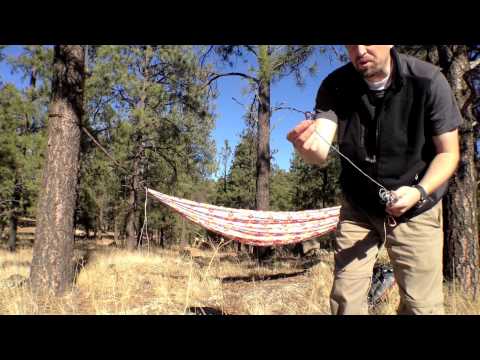Knots are great and all, but what about hardware options for rigging up a tarp? Well, there are dozens of ways to do this, and I illustrated several ways in my book. When I use a continuous ridge line, I most often use a very simple method using two carabiners and a prusik knot. It’s pretty quick and painless (i.e., no knots!) and uses minimal hardware (lightweight! inexpensive!). I prefer to keep my ridge line separate from my tarp, but there are ways to leave your ridge line connected if you prefer.
In this illustration, I try to show a few different hardware options that achieve basically the same thing. In example “A,” I show what I typically do using the two mini carabiners. In example “B,” I show how you can use other hardware, like the Nite Ize Carabiner Figure 9 or the DutchWare Stingers. You can use Figure 9’s and Stingers in other ways, of course, but this is a pretty simple example.
There are three “basic” steps: 1) connect the ridge line, 2) clip on the tarp, and 3) adjust the tarp left-to-right (actually a fourth step would be to actually tighten the ridge line and tie down the guy lines to the tarp :). As I mentioned in my no hardware example, make your left-to-right adjusting when the line is slightly loose so you don’t cut into the bark of the tree.
For “A” and “B,” one end is fixed with a mini carabiner. In “A,” the other end of the line has a prusik knot and an attached mini carabiner. In example “B,” the other side of the line has nothing attached; the tarp has the hardware clipped instead (e.g. Figure 9 or Stingers).
This example is used to show how you can achieve the “V” in the ridge line so the hammock suspension can fit easily in the middle.
Update: Some folks have asked how to keep the tarp from slipping when setting up using the Dutch hook and tarp flyz method. After clipping on the hook and walking the tarp out, you next center the tarp by sliding it into position. Once centered, take the line and do a quick wrap around the antenna to hold the tarp. Now you can walk or reach the standing end around the tree and the tarp will stay in place. Finally, unhook the antenna and then cinch up the line normally.







Leave a Reply